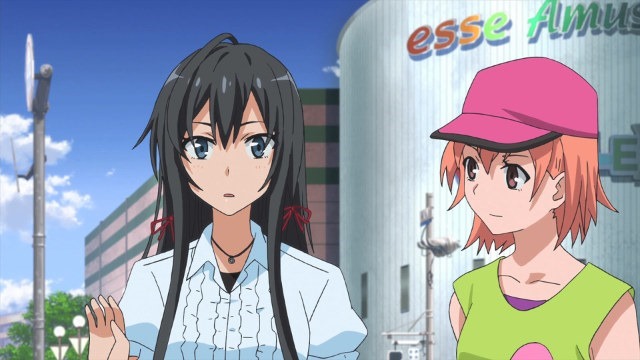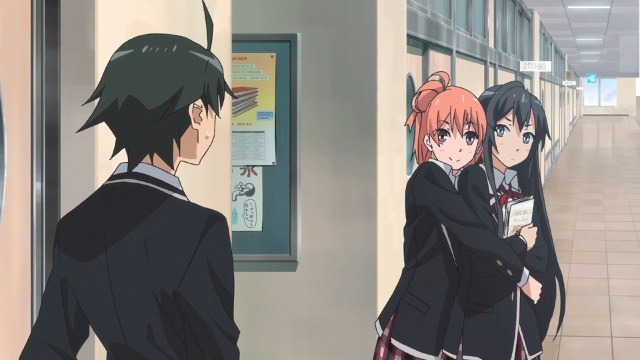 What if, randomly, you and your friends suddenly began to switch minds? One moment you were you, another moment you were in the body of your friend and they in yours. What if you and your friends had sudden flashes of no self-restraint, and your secret desires and urges suddenly came rushing forth without you able to stop yourself? How would all of this affect your lives, your psyches, your relationships?
What if, randomly, you and your friends suddenly began to switch minds? One moment you were you, another moment you were in the body of your friend and they in yours. What if you and your friends had sudden flashes of no self-restraint, and your secret desires and urges suddenly came rushing forth without you able to stop yourself? How would all of this affect your lives, your psyches, your relationships?
Kokoro Connect is an ingenious little series that takes the above premise and cleverly uses it to tell a very dramatic and moving story of five friends. One day they are just normal pals in a little student club of their own making, the next they begin experiencing the mind swapping. A mysterious being, who can at any time inhabit their bodies or, more usually, that of their home room teacher, reveals itself as the one causing these strange phenomenon. It is this science fiction element that quite literally gives the story the creative license to pull off some amazingly dramatic highs.

Because think about it: suddenly your body at any time can be controlled by one of your friends. Trust becomes more valuable than gold, because any one of them could do something to ruin the reputation of another, beyond simple mistakes like entering the boy’s restroom out of habit despite being in a girl’s body at the time. Plus, secrets, home life, and one’s past are no longer kept passively hidden. Now at any time your privacy could be revealed to a friend. Everyone is already on edge dealing with this phenomenon, they aren’t mentally prepared for the rest.
It is genius, really. When critiquing works of fiction, it’s common to complain of contrived drama and circumstances. We want our stories to feel real and organic. The irony is, of course, that being works of fiction means they are 100% contrived by an author and we know it. But we don’t want to be reminded of that while experiencing it! Furthermore, most dramas struggle with this problem. How to make interesting and larger-than-life moments and situations feel plausible and real? They aren’t, because it is fiction, but they also aren’t because they are way more sensational and exciting than real life ever actually is. After all, we don’t read about or watch boring normal folks. There’s always something special and stupendous about it that makes it worth experiencing, right? That seems to directly conflict with our desire for it to be believable.
Kokoro Connect basically solves this problem by, ironically, contriving of the sci-fi element. By having a mysterious being cause these strange mind-swaps and uncontrollable urges, he is like an author pulling the strings and creating tension, drama, and pushing them to extremes. Why does he do this? Time and time again, his answer remains the same: to make things interesting.
Isn’t that exactly what we, the viewers, demand and desire, too? I did say this show was quite clever!
But a lot of that theorizing is not necessary to enjoy the show. In fact, the sci-fi element is underutilized, in my opinion. True, it is a sort of MacGuffin that drives the overarching plot, but the real core of it all is the characters. This is a drama, after all, and overwhelmingly they focus on them, their feelings, their relationships, and how they get through this crazy and tumultuous time together.
And it is a hell of a ride.
The screenplay and directing is extremely good, way beyond most anime and even a lot of live action stuff. In fact, it may be too good. Things are always so dramatic, so often, as each episode keeps trying to take things further, that reality starts to feel left behind. Nobody talks like this, has these kinds of amazing insightful epiphanies, discussions, or fights. It’s so perfect and well done and the lines are too good, it’s impossible to actually happen like this!
But, really, that’s about the worst I could say of this, that the writing and dialogue is so good it’s unbelievable at the same time. Perhaps the later episodes, too, aren’t quite as strong as the earlier stuff, but that may just be because it lacks the same sense of mystery and suspense now that the characters are more accustomed to the phenomenon. That and the mind-swapping is the more interesting of the three phenomenon that will occur.
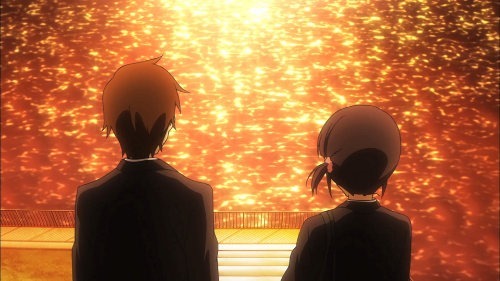
Animation is pretty damn good, with nice use of color and contrast, really good cinematography and visual layout. Backgrounds are very crisp and detailed without being so good they are sterile like some of PA Works’ stuff. Characters have realistic hair colors and so on and aren’t overly cutesy, either. The actual quality of the character drawings can be dodgy at times, but the show more than makes up for it in all other aspects and it is never bad enough to pull you out of the moment. The music is also above average and the sound work is used to very good effect, especially the timing during the next-episode previews. And veteran voice actress Miyuki Sawashiro gives an incredible and moving performance as Inaba, who is by far the most interesting and standout of the bunch.
As a character-driven show, they’ve done a stupendous job to avoid archetypes and create real and nuanced people. Sure, they sort of seem to fit some stereotypes at first, but they quickly reveal a lot of distinction, which is important both for interesting characters but also important because they are so frequently swapping minds and bodies. I promise by the end you will feel incredibly attached to these well-fleshed out folks.
If there is another big complaint to be had it is the length. A half-season of thirteen episodes is just not enough. The story keeps good pacing and is broken into several mostly self-contained major arcs, no doubt based on distinct novels in the original series. But it didn’t surprise me to find out that the novels are still ongoing and that this barely covers the first few. Four more episodes, comprising of another separate major arc (and novel), are due next April or so with the home video releases. They will be quite a welcome addition though I doubt they will really be able to resolve much, given that another five novels follow and the author isn’t done yet.
Still, these are all barely nitpicks. This was the best little soap opera I’d seen in a long time. If you like character driven dramas, or hell you just like really good human stories, do give this a shot. It’s really good!
As of this writing, you can watch Kokoro Connectfor free on Crunchyroll.
 Astarotte no Omocha (or Astarotte’s Toy) is yet another series that struggles with identity, juggling an actual story on the one hand and cringe-worthy underage sexual themes on the other. You see, the main character is ten and it is her duty as a young succubus princess to start “extracting life seed” from males in order to live (like vampires need blood, as the show puts it). How, you ask? Well, blow jobs of course.
Astarotte no Omocha (or Astarotte’s Toy) is yet another series that struggles with identity, juggling an actual story on the one hand and cringe-worthy underage sexual themes on the other. You see, the main character is ten and it is her duty as a young succubus princess to start “extracting life seed” from males in order to live (like vampires need blood, as the show puts it). How, you ask? Well, blow jobs of course.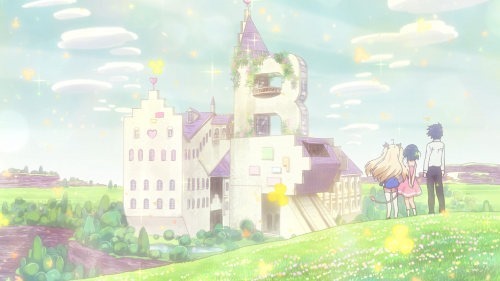
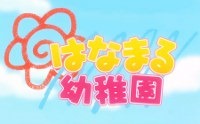 Hanamaru Yōchien (or Hanamaru Kindergarten) is a surprisingly enjoyable little series that I decided to watch while away from home one weekend. I figured I’d save the big important stuff for when I had proper time to sit down and view it on the big TV, and this would just be a little something to pass the time. It’s about some young adult kindergarten teachers and several of their little students in a sort of light-hearted rom-com thing. You see, our male lead is instantly infatuated with one of his kindergarten teacher co-workers who is a bit clueless when it comes to men liking her. Then there’s one of his young toddler students who is instantly infatuated with him and runs around telling everyone how she’s going to marry her teacher when she grows up.
Hanamaru Yōchien (or Hanamaru Kindergarten) is a surprisingly enjoyable little series that I decided to watch while away from home one weekend. I figured I’d save the big important stuff for when I had proper time to sit down and view it on the big TV, and this would just be a little something to pass the time. It’s about some young adult kindergarten teachers and several of their little students in a sort of light-hearted rom-com thing. You see, our male lead is instantly infatuated with one of his kindergarten teacher co-workers who is a bit clueless when it comes to men liking her. Then there’s one of his young toddler students who is instantly infatuated with him and runs around telling everyone how she’s going to marry her teacher when she grows up.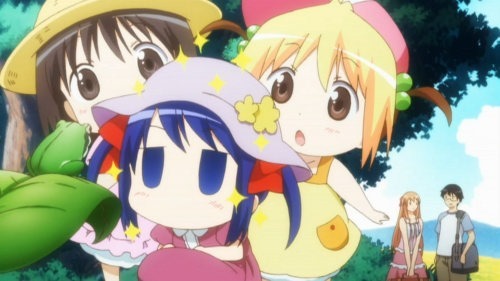
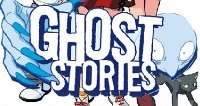 Ghost Stories has an interesting little history to its existence. It was a fairly unsuccessful title (for reasons that quickly become obvious when you see it) but it made it to the States here anyway. ADV then proceeded, amidst a lot of hue and cry from certain pockets of the fandom, to rewrite the dialogue extensively, keeping the story and basic plot in tact but throwing in all sorts of ridiculous voice acting, one liners, sexual and racist humor, frequent fourth-wall breaking, and lots of US pop-culture references. Wait, what? Yes. It is basically an official abridged dub, and man is it funny.
Ghost Stories has an interesting little history to its existence. It was a fairly unsuccessful title (for reasons that quickly become obvious when you see it) but it made it to the States here anyway. ADV then proceeded, amidst a lot of hue and cry from certain pockets of the fandom, to rewrite the dialogue extensively, keeping the story and basic plot in tact but throwing in all sorts of ridiculous voice acting, one liners, sexual and racist humor, frequent fourth-wall breaking, and lots of US pop-culture references. Wait, what? Yes. It is basically an official abridged dub, and man is it funny.
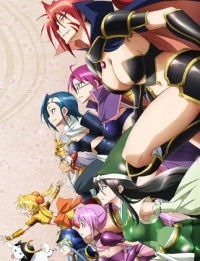 Sengoku Otome: Momoiro Paradox (retitled Battle Girls: Time Paradox here in the states, since it sounds better than the literal translation Warring States Maidens: Pink Paradox) is one of those shows with a silly premise and style that also tries to have some serious bits thrown in. It’s obviously pandering and niche and yet it wants to sort of be something substantial. Imagine Escaflowne mixed with Dynasty Warriors and lots more tits. Put simply: girl is transported to alternate history
Sengoku Otome: Momoiro Paradox (retitled Battle Girls: Time Paradox here in the states, since it sounds better than the literal translation Warring States Maidens: Pink Paradox) is one of those shows with a silly premise and style that also tries to have some serious bits thrown in. It’s obviously pandering and niche and yet it wants to sort of be something substantial. Imagine Escaflowne mixed with Dynasty Warriors and lots more tits. Put simply: girl is transported to alternate history 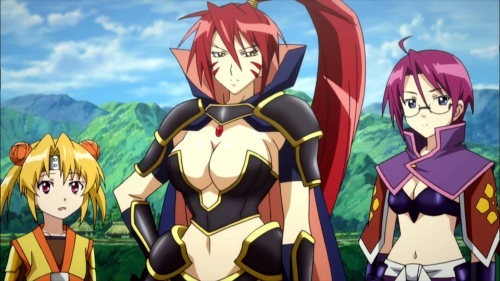
 YuruYuri takes the lesbian thing a bit further by being completely upfront with its intended purpose right in the damn title. In case you somehow miss that fact, the first episode will make sure you don’t, tossing plenty of obvious girl-love in your face repeatedly. Much of the humor is based on this, too, whether it is Akari’s older sister and her weird sister-fetish, Chitose’s wild lesbian fantasies, or Chinatsu’s unhealthy adoration of Yui.
YuruYuri takes the lesbian thing a bit further by being completely upfront with its intended purpose right in the damn title. In case you somehow miss that fact, the first episode will make sure you don’t, tossing plenty of obvious girl-love in your face repeatedly. Much of the humor is based on this, too, whether it is Akari’s older sister and her weird sister-fetish, Chitose’s wild lesbian fantasies, or Chinatsu’s unhealthy adoration of Yui.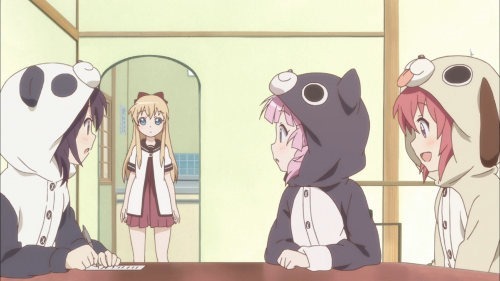
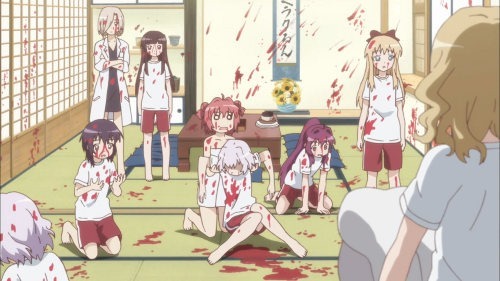
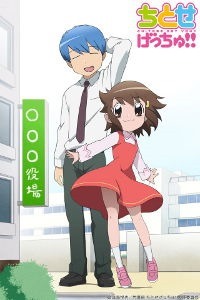 Chitose Get You!! is one of those silly little throw-aways. Each episode is a mere three minutes and that includes time for the credits/theme song. It does sort of have an overarching basic plot and stuff but with so little time it obviously never really develops it. Put simply, eleven year-old Chitose is enamored of this office worker who’s building is across from her school. Hijinks ensue as she ditches school to go see him and other antics, mostly involving her teacher who has to play the irate disciplinarian most of the time. A handful of other colorful characters round out the cast, like the tomboy Misaki or the reticent and eccentric Hinako.
Chitose Get You!! is one of those silly little throw-aways. Each episode is a mere three minutes and that includes time for the credits/theme song. It does sort of have an overarching basic plot and stuff but with so little time it obviously never really develops it. Put simply, eleven year-old Chitose is enamored of this office worker who’s building is across from her school. Hijinks ensue as she ditches school to go see him and other antics, mostly involving her teacher who has to play the irate disciplinarian most of the time. A handful of other colorful characters round out the cast, like the tomboy Misaki or the reticent and eccentric Hinako.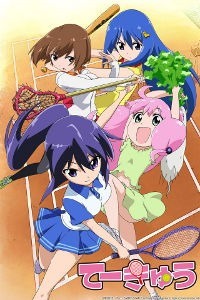 Teekyu is similar, in that it is also a silly throw-away show. It ups the ante though by being only two minutes per episode, including the credits. They accomplish this by having all the dialog and actions occur at breakneck speed (almost like it is being fast-forwarded). Blink and you’ll miss another dumb pun or some bizarre reference.
Teekyu is similar, in that it is also a silly throw-away show. It ups the ante though by being only two minutes per episode, including the credits. They accomplish this by having all the dialog and actions occur at breakneck speed (almost like it is being fast-forwarded). Blink and you’ll miss another dumb pun or some bizarre reference. Many decades ago, a young girl died tragically down in a now forgotten room of the old wing of the school. No one remembers exactly why or what really happened, but rumors persist to this day of her death and how she haunts the school. That is, until a young boy chances upon said room and her still wandering ghost…
Many decades ago, a young girl died tragically down in a now forgotten room of the old wing of the school. No one remembers exactly why or what really happened, but rumors persist to this day of her death and how she haunts the school. That is, until a young boy chances upon said room and her still wandering ghost…

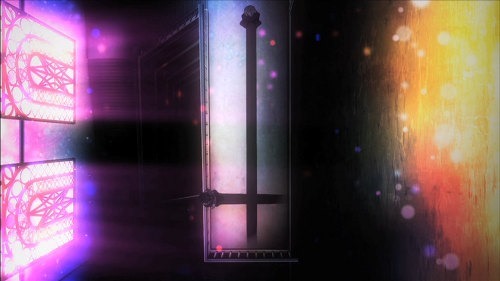

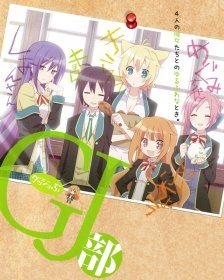 GJ-bu is pointlessly cute and yet strangely appealing to me. I’m almost embarrassed how effective it was at roping me in. Based on a yonkoma (and it shows), the story is non-existent. You’ll get gradually introduced to characters but that’s about the extent of things. They’re ostensibly in a school club but from what is shown it seems like they never are actually in class. Other than a few brief times the scenes rarely leave the club room. Speaking of which, what the hell is their club and why is it called GJ-bu? (Aside from the obvious play on words: if you say it out loud it sounds like “good job” in engrish and yet also means “GJ Club” which could also mean “Good Job Club” perhaps). Why does Kirara eat cartoon meat all the time and no one questions it, etc. Very little is ever explained despite the show having more loose threads than a homeless man’s sweatshirt. And yet it really doesn’t matter because the true appeal is in the characters, both visually and comically. (For an excellent break-down of slice-of-life shows and how GJ-bu in particular excels, see
GJ-bu is pointlessly cute and yet strangely appealing to me. I’m almost embarrassed how effective it was at roping me in. Based on a yonkoma (and it shows), the story is non-existent. You’ll get gradually introduced to characters but that’s about the extent of things. They’re ostensibly in a school club but from what is shown it seems like they never are actually in class. Other than a few brief times the scenes rarely leave the club room. Speaking of which, what the hell is their club and why is it called GJ-bu? (Aside from the obvious play on words: if you say it out loud it sounds like “good job” in engrish and yet also means “GJ Club” which could also mean “Good Job Club” perhaps). Why does Kirara eat cartoon meat all the time and no one questions it, etc. Very little is ever explained despite the show having more loose threads than a homeless man’s sweatshirt. And yet it really doesn’t matter because the true appeal is in the characters, both visually and comically. (For an excellent break-down of slice-of-life shows and how GJ-bu in particular excels, see 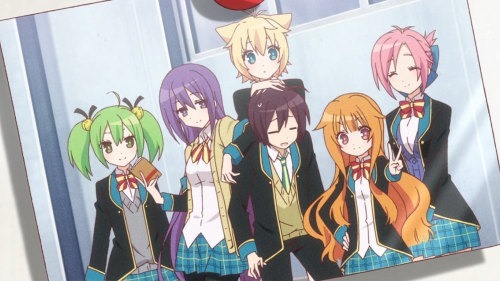
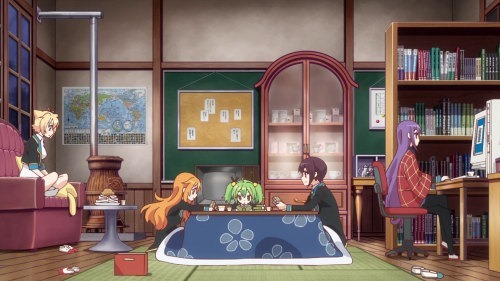
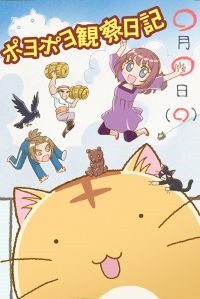 Poyopoyo Kansatsu Nikki (lit. Poyopoyo Observation Diary) is an incredibly cute, fun, and just plain good little series of 3-min shorts (though there are 52 of them to keep you occupied for awhile). It concerns a rather round, ball-shaped yellow cat (named Poyo) and the family that finds him as a stray one day. Each episode tends to follow a theme and explore all sorts of random hijinks and silliness.
Poyopoyo Kansatsu Nikki (lit. Poyopoyo Observation Diary) is an incredibly cute, fun, and just plain good little series of 3-min shorts (though there are 52 of them to keep you occupied for awhile). It concerns a rather round, ball-shaped yellow cat (named Poyo) and the family that finds him as a stray one day. Each episode tends to follow a theme and explore all sorts of random hijinks and silliness. Ai Mai Mi is another set of 3-min shorts, though an incredibly brief 13 of them. It concerns three girls (named Ai, Mai, and Mi if you haven’t guessed yet) who purportedly are in a manga club or something. Not that it really matters because most of the time is spent on random weirdness. Yeah, it’s another one of those bizarre little things that is a lot of Japanese humor that if you don’t like you won’t like this series at all.
Ai Mai Mi is another set of 3-min shorts, though an incredibly brief 13 of them. It concerns three girls (named Ai, Mai, and Mi if you haven’t guessed yet) who purportedly are in a manga club or something. Not that it really matters because most of the time is spent on random weirdness. Yeah, it’s another one of those bizarre little things that is a lot of Japanese humor that if you don’t like you won’t like this series at all.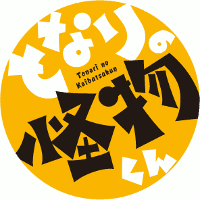 She is an introverted loner who cares only for her studies and grades. He is rambunctious, random, naïve, honest, and dangerous when he's mad. It is a clashing of two totally opposite personalities as they form hijinks and love.
She is an introverted loner who cares only for her studies and grades. He is rambunctious, random, naïve, honest, and dangerous when he's mad. It is a clashing of two totally opposite personalities as they form hijinks and love.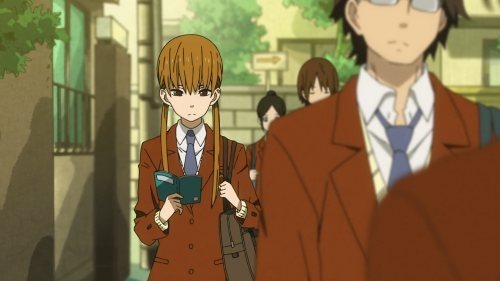

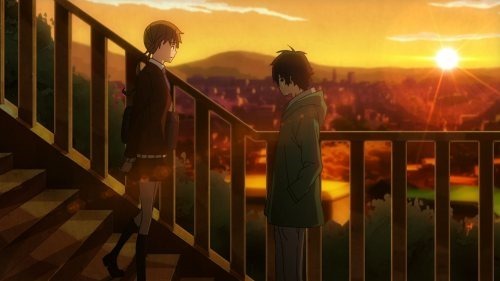
 Thus cometh the invader, the fearsome Squid Girl! Oh wait, actually she looks twelve and keeps getting distracted from her invasion goal with other random tangents with the family that runs a cafe on the beach. She has tentacles for hair, she spits ink, and her hat seems to be actually part of her head. It's Squid Girl!
Thus cometh the invader, the fearsome Squid Girl! Oh wait, actually she looks twelve and keeps getting distracted from her invasion goal with other random tangents with the family that runs a cafe on the beach. She has tentacles for hair, she spits ink, and her hat seems to be actually part of her head. It's Squid Girl!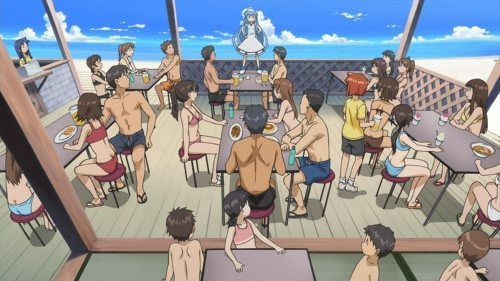

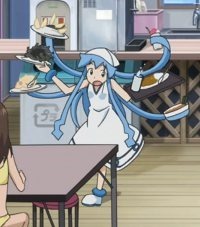 Especially troubling because there were some glimmers of potent storytelling. The second season finale, some of the lessons on family and friends, but most of all a first season episode (number six I believe) where Eiko has a dream where she finds a miniature Squid Girl and keeps it as a pet. This short is told entirely without dialogue, with the visuals choreographed to a lovely piano piece that is part curious, hopeful, content, and sad. We watch her as she is timid and fearful, growing to trust her new owner, as they spend time playing or just being there when she gets home. We see Eiko’s life unfold through the ups and downs, but there’s little pet Squid Girl to cheer her up through the rough times and cheer and squii during the good. We see time roll on until the day Eiko passes away in bed, old and gray, leaving her lifelong friend behind. It’s the kind of beautiful, sentimental little audio-visual piece you don’t expect a show like Ika Musume to do.
Especially troubling because there were some glimmers of potent storytelling. The second season finale, some of the lessons on family and friends, but most of all a first season episode (number six I believe) where Eiko has a dream where she finds a miniature Squid Girl and keeps it as a pet. This short is told entirely without dialogue, with the visuals choreographed to a lovely piano piece that is part curious, hopeful, content, and sad. We watch her as she is timid and fearful, growing to trust her new owner, as they spend time playing or just being there when she gets home. We see Eiko’s life unfold through the ups and downs, but there’s little pet Squid Girl to cheer her up through the rough times and cheer and squii during the good. We see time roll on until the day Eiko passes away in bed, old and gray, leaving her lifelong friend behind. It’s the kind of beautiful, sentimental little audio-visual piece you don’t expect a show like Ika Musume to do.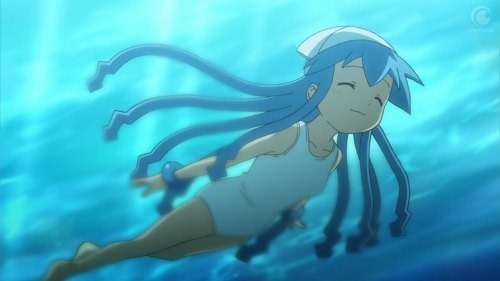
 Now a mostly-cured human after briefly becoming a vampire, our high school senior hero Araragi finds himself mixed up, primarily due to his meddlesome nature, with a number girls each of whom is involved with various sorts of ghosts, gods, and spirits.
Now a mostly-cured human after briefly becoming a vampire, our high school senior hero Araragi finds himself mixed up, primarily due to his meddlesome nature, with a number girls each of whom is involved with various sorts of ghosts, gods, and spirits. The title is a portmanteau of “ghost” (bakemono) and “story” (monogatari) and so it sort of translates to “ghostory”. The second series, called Nisemonogatari executes a similar language trick, combining “impostor” (nisemono) and “story” into something like “impostory”. This titular word play is the first clue that the show likes to play with language, imagery, and style. Sometimes breathtaking, often confusing, and occasionally lucid, the story is broken into several major arcs centered around one of the female characters and her supernatural situation. Refreshingly, it never really becomes a harem per se, as the girls, while often reeking of common archetypes at first, are distinct and maintained throughout the rest of the series. Helpfully, this avoids that too common disconnected problem with characters disappearing after their story bit is over. Not so here! Each one manages to find a place in the story and become contributors in their own way to the weird tale. Mostly, this is through one-on-one interactions with our male lead Araragi. In fact, dialogue is a major component of the storytelling, although the visuals provide the sub-textual sugar and spice.
The title is a portmanteau of “ghost” (bakemono) and “story” (monogatari) and so it sort of translates to “ghostory”. The second series, called Nisemonogatari executes a similar language trick, combining “impostor” (nisemono) and “story” into something like “impostory”. This titular word play is the first clue that the show likes to play with language, imagery, and style. Sometimes breathtaking, often confusing, and occasionally lucid, the story is broken into several major arcs centered around one of the female characters and her supernatural situation. Refreshingly, it never really becomes a harem per se, as the girls, while often reeking of common archetypes at first, are distinct and maintained throughout the rest of the series. Helpfully, this avoids that too common disconnected problem with characters disappearing after their story bit is over. Not so here! Each one manages to find a place in the story and become contributors in their own way to the weird tale. Mostly, this is through one-on-one interactions with our male lead Araragi. In fact, dialogue is a major component of the storytelling, although the visuals provide the sub-textual sugar and spice.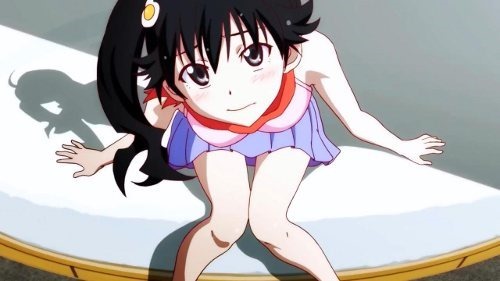
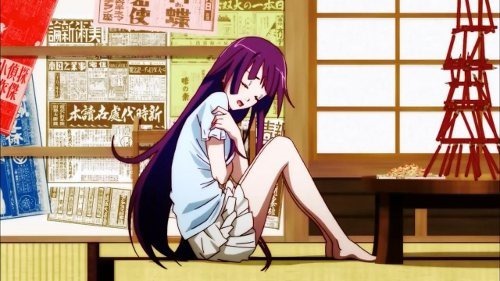
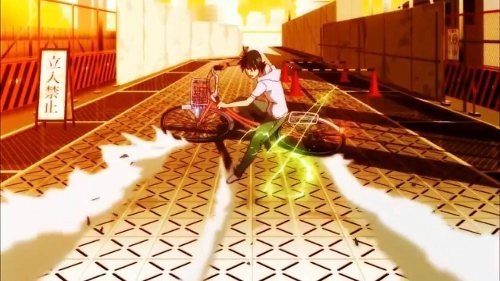
 although some of them do require waiting till the second series to find their groove (or in some cases, like the Araragi “Fire Sisters”, some actual screen time). Even though it has some problems with pacing (particularly the second series, which manages to cover only two girls compared to five from the first series despite having the same number of episodes), it is sometimes too clever for its own good, and the fact that it is a divisive love-it-or-hate-it show, it is different and stands far out from the rest. That alone is reason enough to give it a shot to at least experience something peculiar, something that has a lot of effort of thought and skill. Even if you find it annoying or stupid, you’ll not likely be able to compare it to much else.
although some of them do require waiting till the second series to find their groove (or in some cases, like the Araragi “Fire Sisters”, some actual screen time). Even though it has some problems with pacing (particularly the second series, which manages to cover only two girls compared to five from the first series despite having the same number of episodes), it is sometimes too clever for its own good, and the fact that it is a divisive love-it-or-hate-it show, it is different and stands far out from the rest. That alone is reason enough to give it a shot to at least experience something peculiar, something that has a lot of effort of thought and skill. Even if you find it annoying or stupid, you’ll not likely be able to compare it to much else. An idiot savant girl, the namesake of the series, transfers to an art-centric high school to pursue a career as a manga artist despite already being a child prodigy in the painting fine arts. But while genius in the arts she lacks everyday common sense, right down even to basic functions like dressing herself. Yes, that sound is everybody letting out a vexed sigh at the doinky and unbelievable premise I just laid out.
An idiot savant girl, the namesake of the series, transfers to an art-centric high school to pursue a career as a manga artist despite already being a child prodigy in the painting fine arts. But while genius in the arts she lacks everyday common sense, right down even to basic functions like dressing herself. Yes, that sound is everybody letting out a vexed sigh at the doinky and unbelievable premise I just laid out. Our lead boy, Sorata, finds himself living in the “weird people” dorm of his school because he cannot help taking in stray cats, which are against the normal dorms’ policies. Oh! How appropriate indeed that he immediately does the same when Mashiro arrives, a girl who excels at anything her pencil or paintbrush touches but who can barely understand basic social etiquette much less laundry. You can almost picture every embarrassing bath scene, dressing scene, and misunderstanding to come. Thank the gods, these egregious bits of fanservice mostly only litter the initial few episodes.
Our lead boy, Sorata, finds himself living in the “weird people” dorm of his school because he cannot help taking in stray cats, which are against the normal dorms’ policies. Oh! How appropriate indeed that he immediately does the same when Mashiro arrives, a girl who excels at anything her pencil or paintbrush touches but who can barely understand basic social etiquette much less laundry. You can almost picture every embarrassing bath scene, dressing scene, and misunderstanding to come. Thank the gods, these egregious bits of fanservice mostly only litter the initial few episodes.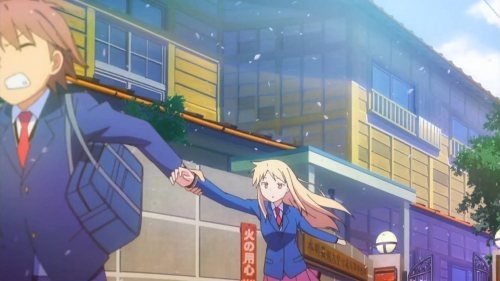
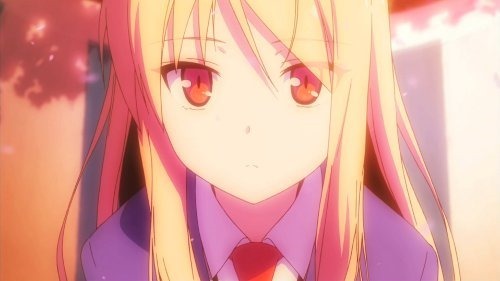
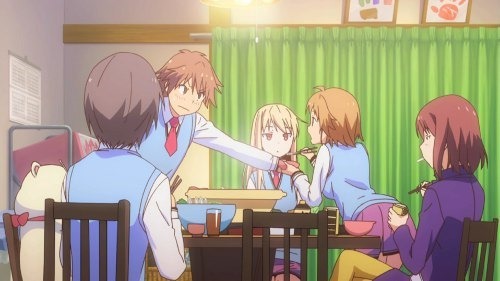
 A new MMO that uses virtual reality headsets to play garners a lot of buzz in the gamer community after a successful private beta. The public release is marked by a lot hype, especially when it is limited to only 10,000 copies sold. The first day it opens for play, the lucky few who manage to get a copy log in for the first time, only to quickly discover the logout button that was there during the beta is missing. The lead creator and designer reveals himself and announces the situation. Everyone is stuck playing his masterpiece game, Sword Art Online, until the final boss is cleared; everyone’s character has been altered to match their real life appearance; and most sinister of all: death in the game means death in real life, too.
A new MMO that uses virtual reality headsets to play garners a lot of buzz in the gamer community after a successful private beta. The public release is marked by a lot hype, especially when it is limited to only 10,000 copies sold. The first day it opens for play, the lucky few who manage to get a copy log in for the first time, only to quickly discover the logout button that was there during the beta is missing. The lead creator and designer reveals himself and announces the situation. Everyone is stuck playing his masterpiece game, Sword Art Online, until the final boss is cleared; everyone’s character has been altered to match their real life appearance; and most sinister of all: death in the game means death in real life, too.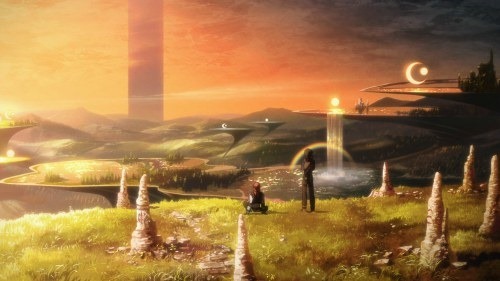
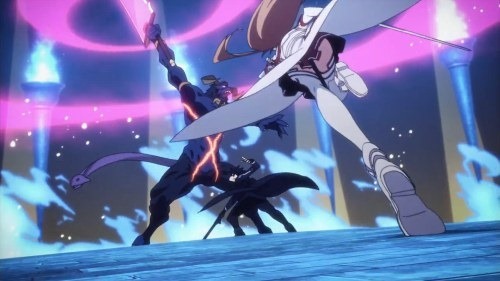
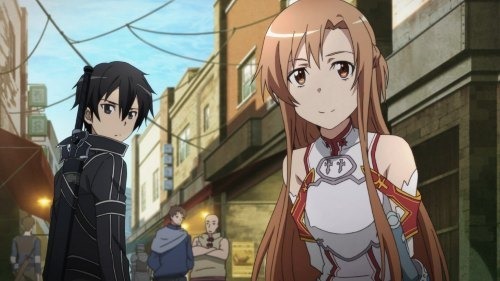
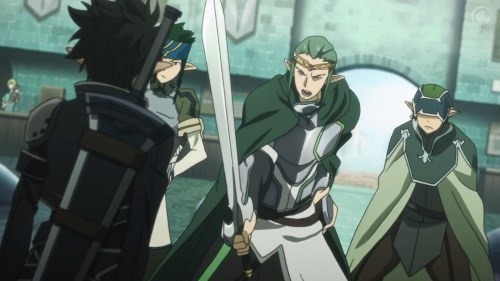
 Years and years ago I remember being an extremely hardcore Tenchi Muyo! fan, specifically the original OVA. At the time, I was busy admiring the suave Kagato, digging the funky trees-in-space sci-fi, or feeling so badass because I saw the uncut version where you could see their titties (hey, man, I was pretty young). The fact that it was a harem anime went mostly over my head — I mean, it had so much else to focus on.
Years and years ago I remember being an extremely hardcore Tenchi Muyo! fan, specifically the original OVA. At the time, I was busy admiring the suave Kagato, digging the funky trees-in-space sci-fi, or feeling so badass because I saw the uncut version where you could see their titties (hey, man, I was pretty young). The fact that it was a harem anime went mostly over my head — I mean, it had so much else to focus on.


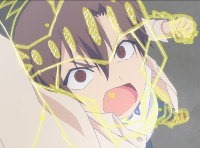 It’s too bad, then, that the characters are a mix of dumb and despicable for the most part (as I’ve already basically covered). Thankfully, there is enough above average humor to hold this show together, and I have to admit the cliché childhood friend thing hooked me like the sappy sea bass I am (that makes me a Chiwa-bro, I guess). Plus, those nice visuals I mentioned do make for a healthy amount of moe-pandering which is still deliciously cute a lot of the time even if it’s ordinary and uninspired.
It’s too bad, then, that the characters are a mix of dumb and despicable for the most part (as I’ve already basically covered). Thankfully, there is enough above average humor to hold this show together, and I have to admit the cliché childhood friend thing hooked me like the sappy sea bass I am (that makes me a Chiwa-bro, I guess). Plus, those nice visuals I mentioned do make for a healthy amount of moe-pandering which is still deliciously cute a lot of the time even if it’s ordinary and uninspired.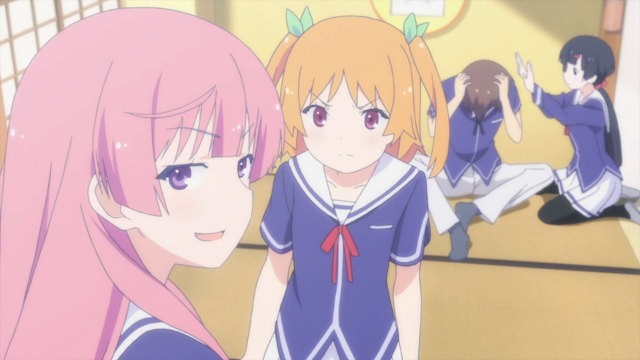
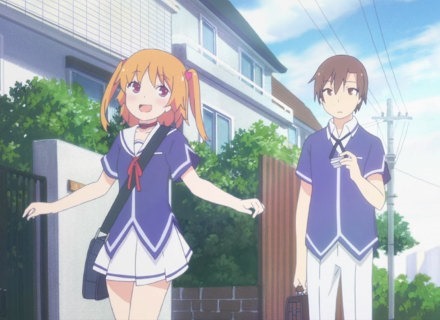
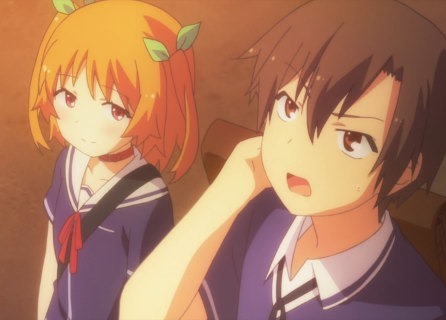
 Mangirl! maintains a frenzied pace and is mostly silly and cartoony but still amusing. There’s a lot of focus on the manga biz, which ends up being rather curious and interesting at times. Unfortunately, being three-minute episodes this means that the fast and short delivery leaves little time to develop any sort of memorable characters. All but the
Mangirl! maintains a frenzied pace and is mostly silly and cartoony but still amusing. There’s a lot of focus on the manga biz, which ends up being rather curious and interesting at times. Unfortunately, being three-minute episodes this means that the fast and short delivery leaves little time to develop any sort of memorable characters. All but the  Yurumates 3D (and the immediate follow-up sequel, Yurumates 3D Plus) is cute and mildly amusing. That’s really the most that can be said about it. It has a strange super-deformed style despite its main cast being in their twenties (a refreshing change from the myriad high school settings, I suppose). But it mainly concerns itself with the random and mundane lives of its cast, all of whom live in an old apartment building and are in various stages of trying to get into college or kill time between trips to work and the store. It’s often amusing and kinda cute, like I said, but in two seasons it never really manages to excel at anything or develop anything meaningful plot/character-wise. Still, you could do far worse, and I certainly had a few good laughs and chuckles out of it. Like all of the shows I’m reviewing today, you can burn through this one in a single sitting most likely.
Yurumates 3D (and the immediate follow-up sequel, Yurumates 3D Plus) is cute and mildly amusing. That’s really the most that can be said about it. It has a strange super-deformed style despite its main cast being in their twenties (a refreshing change from the myriad high school settings, I suppose). But it mainly concerns itself with the random and mundane lives of its cast, all of whom live in an old apartment building and are in various stages of trying to get into college or kill time between trips to work and the store. It’s often amusing and kinda cute, like I said, but in two seasons it never really manages to excel at anything or develop anything meaningful plot/character-wise. Still, you could do far worse, and I certainly had a few good laughs and chuckles out of it. Like all of the shows I’m reviewing today, you can burn through this one in a single sitting most likely. Encouragement of Climb, aside from being clumsily named, is a slice-of-life series mixed with amateur mountaineering 101 lessons. It’s cute and surprisingly well animated, with some really nice vistas, detailed backgrounds, and very competent animation. It tends towards the overly cutesy side on the characters, they skewing quite young and all. It’s so short it’s over before you know it, disappointingly right when things start to get rolling. Oh well. Still, cute and eye-pleasing and generally feel-good. It could certainly benefit from a continuation season. (Considering it just recently aired, maybe that will happen?)
Encouragement of Climb, aside from being clumsily named, is a slice-of-life series mixed with amateur mountaineering 101 lessons. It’s cute and surprisingly well animated, with some really nice vistas, detailed backgrounds, and very competent animation. It tends towards the overly cutesy side on the characters, they skewing quite young and all. It’s so short it’s over before you know it, disappointingly right when things start to get rolling. Oh well. Still, cute and eye-pleasing and generally feel-good. It could certainly benefit from a continuation season. (Considering it just recently aired, maybe that will happen?) As a bit of a walk down memory lane (for me, anyway), I was surprised to see Cosplay Complex offered by Crunchyroll. I saw this one years and years ago but never got to see the last episode. It’s a three-part OVA from the early aughts and it shows… boy does it show its age. I sometimes forget just how amazingly better even ho-hum anime looks these days. Still, the show, while kinda budget-limited in design, has a lot of fun moments and spends most of it pandering to otaku. Expect lots and lots of references to other anime via outfits and so on, plus a large helping of fanservice and ecchi humor. It also features an early Rie Kugimiya role, though an absolutely terrible one. She normally has a fairly baby-ish voice already but this time she seems have turned it up to 10, added even more of a lisp, and is too often using weird alien nonsense words (because she plays a strange miniature action-figure-sized person from space I guess? An explanation is never even hinted at.)
As a bit of a walk down memory lane (for me, anyway), I was surprised to see Cosplay Complex offered by Crunchyroll. I saw this one years and years ago but never got to see the last episode. It’s a three-part OVA from the early aughts and it shows… boy does it show its age. I sometimes forget just how amazingly better even ho-hum anime looks these days. Still, the show, while kinda budget-limited in design, has a lot of fun moments and spends most of it pandering to otaku. Expect lots and lots of references to other anime via outfits and so on, plus a large helping of fanservice and ecchi humor. It also features an early Rie Kugimiya role, though an absolutely terrible one. She normally has a fairly baby-ish voice already but this time she seems have turned it up to 10, added even more of a lisp, and is too often using weird alien nonsense words (because she plays a strange miniature action-figure-sized person from space I guess? An explanation is never even hinted at.)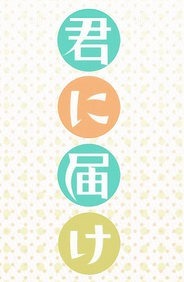 Looking too much like the creepy girl from The Ring movies, our heroine Sawako is timid and shy and naïve to say the least. But after starting a new semester of school a gregarious and kind popular boy befriends her and starts a ripple effect of positive changes in her life. Yes, it is another one of those typical shoujo stories again, but for all of its cliché bits (and there are many) it has a good heart behind it all.
Looking too much like the creepy girl from The Ring movies, our heroine Sawako is timid and shy and naïve to say the least. But after starting a new semester of school a gregarious and kind popular boy befriends her and starts a ripple effect of positive changes in her life. Yes, it is another one of those typical shoujo stories again, but for all of its cliché bits (and there are many) it has a good heart behind it all.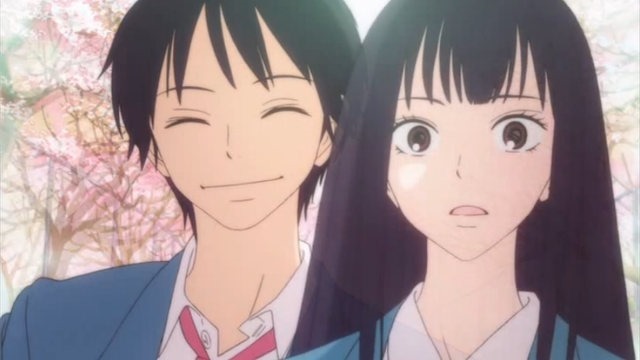
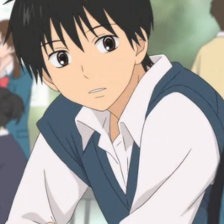 The story is
The story is  I know, I've sounded pretty negative so far. And while the show is a bit on the cheap side, feels too often cliché and unoriginal, and has some frustrating characters… I dunno. I still mostly liked it. For all of its glaring problems it still has its moments of worth-the-wait sweetness. The arc early on exploring friendship amidst destructive rumors is particularly sincere. And some of the later winter stuff is delightfully gooey sweet. And then there’s the last third of season two…
I know, I've sounded pretty negative so far. And while the show is a bit on the cheap side, feels too often cliché and unoriginal, and has some frustrating characters… I dunno. I still mostly liked it. For all of its glaring problems it still has its moments of worth-the-wait sweetness. The arc early on exploring friendship amidst destructive rumors is particularly sincere. And some of the later winter stuff is delightfully gooey sweet. And then there’s the last third of season two…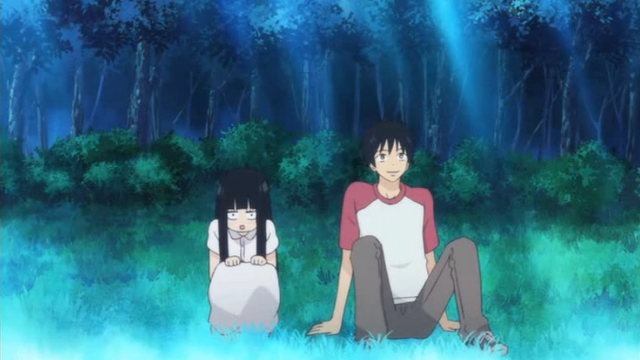
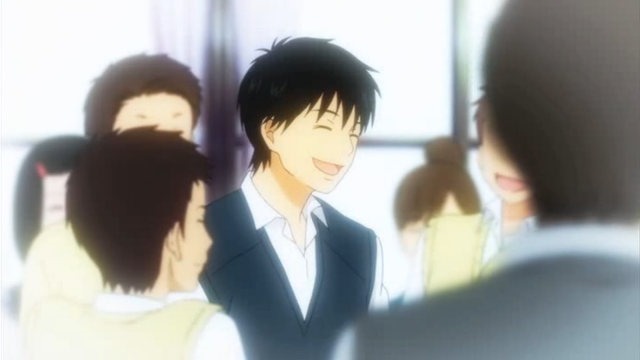
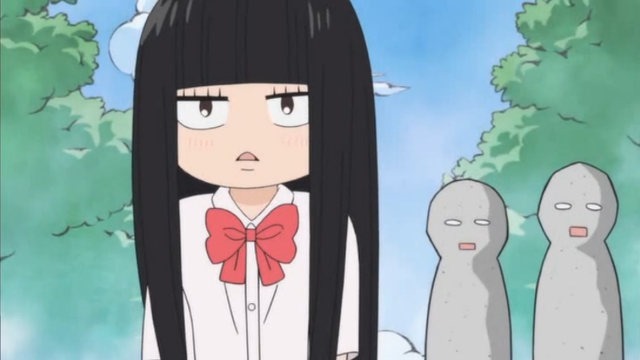
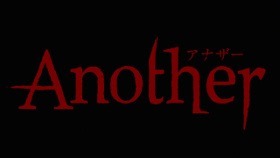 One thing is for sure, horror anime are few and far between but can be some of the best uses of the medium if done correctly. My interest was instantly piqued upon seeing the synopsis and studio (the
One thing is for sure, horror anime are few and far between but can be some of the best uses of the medium if done correctly. My interest was instantly piqued upon seeing the synopsis and studio (the 
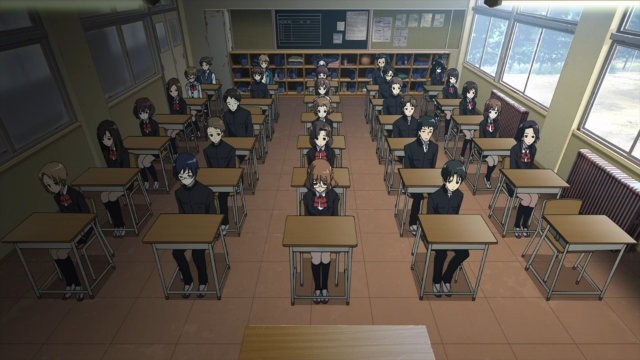
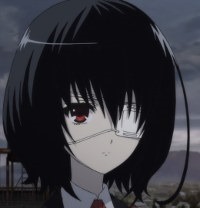 Plus, there's the matter of the strange girl with the eye-patch whom everyone seems to ignore. Coupled with the stories of the girl who died many years ago and a curse that followed, the plot gets very juicy quickly, especially once people start dying. But she of course plays up the stilted robotic thing to a fault and never grows even an inkling of a personality, worse even than the lead Kouichi. Most of the rest aren't much better: there's a class leader who's got a stick up her ass all the time, a token soft-spoken nice one, and a MILF teacher who is about as personable as a bag of rocks. There are like a dozen or so more classmates that sort of get introduced and named but none of them ever get very fleshed out enough to care about before folks start dropping like flies. Even Battle Royale managed to have a huge cast of characters with far more depth and memorability despite the similar challenge of frequent character deaths.
Plus, there's the matter of the strange girl with the eye-patch whom everyone seems to ignore. Coupled with the stories of the girl who died many years ago and a curse that followed, the plot gets very juicy quickly, especially once people start dying. But she of course plays up the stilted robotic thing to a fault and never grows even an inkling of a personality, worse even than the lead Kouichi. Most of the rest aren't much better: there's a class leader who's got a stick up her ass all the time, a token soft-spoken nice one, and a MILF teacher who is about as personable as a bag of rocks. There are like a dozen or so more classmates that sort of get introduced and named but none of them ever get very fleshed out enough to care about before folks start dropping like flies. Even Battle Royale managed to have a huge cast of characters with far more depth and memorability despite the similar challenge of frequent character deaths.
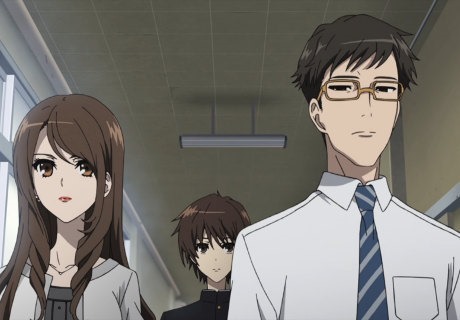
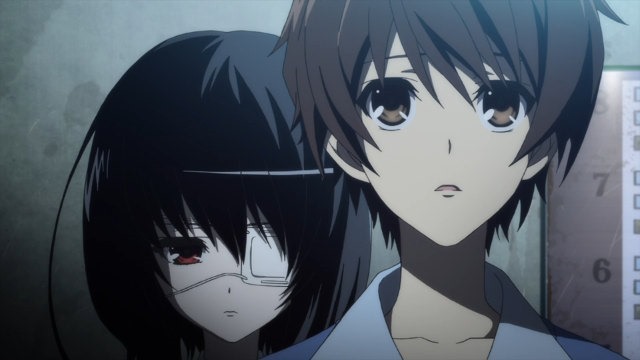
 For a show that garners such universal acclaim, I had perhaps worked up a bit too much hope for Angel Beats! before finally sitting down to watch it. I try very hard to resist even looking at much marketing/hype stuff because I genuinely want to give shows a fair shot — at least, as much as I am able. I don’t think I was particularly all that enthused, though; rather, it was simply that the constant praise and gushing accolades heaped upon the show since its airing had not gone unnoticed to me over the months. Countless people had chimed in to say it was their favorite show, on their top 5 or top 10 lists, or “I didn’t really care about anime until I saw Angel Beats!”
For a show that garners such universal acclaim, I had perhaps worked up a bit too much hope for Angel Beats! before finally sitting down to watch it. I try very hard to resist even looking at much marketing/hype stuff because I genuinely want to give shows a fair shot — at least, as much as I am able. I don’t think I was particularly all that enthused, though; rather, it was simply that the constant praise and gushing accolades heaped upon the show since its airing had not gone unnoticed to me over the months. Countless people had chimed in to say it was their favorite show, on their top 5 or top 10 lists, or “I didn’t really care about anime until I saw Angel Beats!”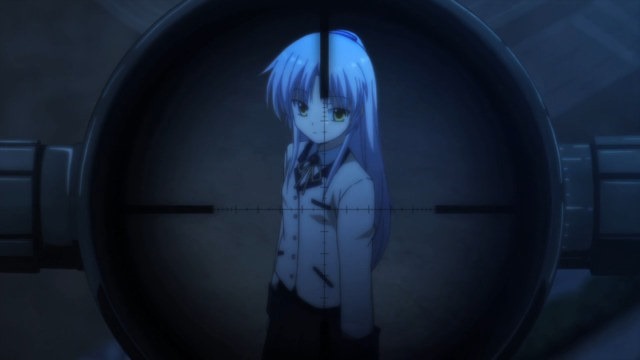

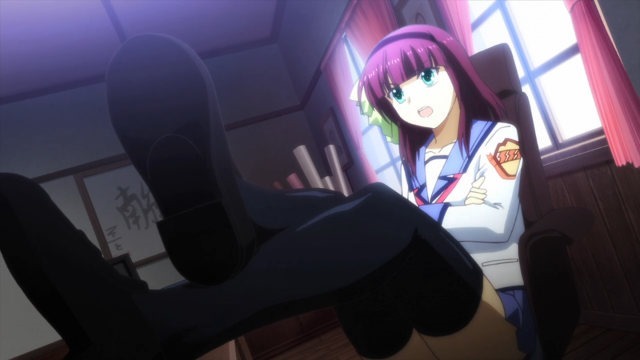
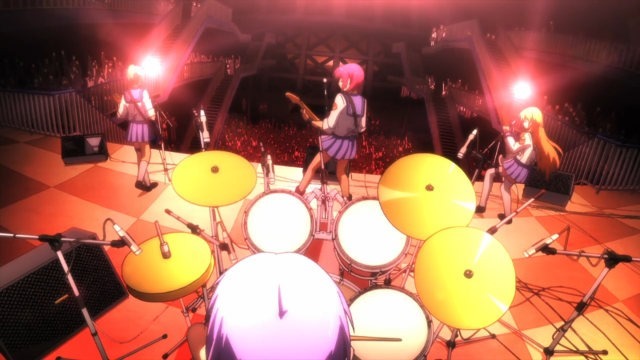
 As much as I am disgusted with the increasing regularity of vapid and masturbatory male-fantasy fanservice employed in more and more anime these days (especially those that spawn from visual/light novel adaptations), I don’t think it is automatically bad. Rather, it has the potential to be sexy, fun, and exciting. Rarely is that ever the case. Indeed, what you usually get is dumb, unrealistic, and demeaning to women, replacing any hope of true eroticism with face-palming juvenile indulgences*. As it turns out, that is precisely what plagues We, Without Wings, another victim of the can’t-make-up-its-mind club.
As much as I am disgusted with the increasing regularity of vapid and masturbatory male-fantasy fanservice employed in more and more anime these days (especially those that spawn from visual/light novel adaptations), I don’t think it is automatically bad. Rather, it has the potential to be sexy, fun, and exciting. Rarely is that ever the case. Indeed, what you usually get is dumb, unrealistic, and demeaning to women, replacing any hope of true eroticism with face-palming juvenile indulgences*. As it turns out, that is precisely what plagues We, Without Wings, another victim of the can’t-make-up-its-mind club.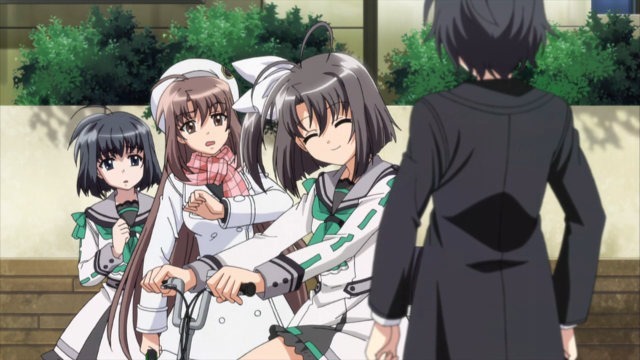
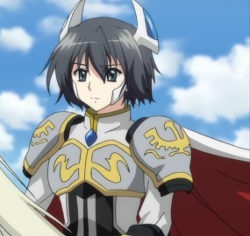 Unfortunately, the show wants to be the conductor on the Fanservice Express, even at one point venturing into an outright hentai sex scene, none of which helps or adds anything useful to the show. It’s all a vapid distraction from the better story it also wants to tell. You wouldn’t ever know it from the promotional images, previews, or hell even the first few episodes, but the story behind We, Without Wings is not merely fluff to prop up the main focus (re: boobs and panties). It displays a real attempt at a threaded narrative about identity between seemingly disparate characters and places and even throws in some swords-and-sorcery-style fantasy for good measure. That last bit, especially, could have easily been a transparent appeal to a wider audience without really serving the plot, but instead manages, in the end, to weave itself in even if it feels out of place for quite awhile — hell, damn near till the last few episodes.
Unfortunately, the show wants to be the conductor on the Fanservice Express, even at one point venturing into an outright hentai sex scene, none of which helps or adds anything useful to the show. It’s all a vapid distraction from the better story it also wants to tell. You wouldn’t ever know it from the promotional images, previews, or hell even the first few episodes, but the story behind We, Without Wings is not merely fluff to prop up the main focus (re: boobs and panties). It displays a real attempt at a threaded narrative about identity between seemingly disparate characters and places and even throws in some swords-and-sorcery-style fantasy for good measure. That last bit, especially, could have easily been a transparent appeal to a wider audience without really serving the plot, but instead manages, in the end, to weave itself in even if it feels out of place for quite awhile — hell, damn near till the last few episodes.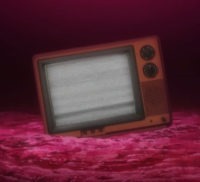 Our story involves several wildly different male characters and places as they interact with friends and girls and so on. Each seems to overlap not at all except at some very peculiar junctures, which serves to set up the primary mystery. Everything else feels kind of episodic, almost pointless slice-of-life vignettes, but I assure you things do eventually coalesce in a not-so-terribly executed way. I’ll say now that if you’ve ever played the game Killer 7, you will probably have a huge advantage in figuring out what’s going on over everybody else, especially with the “channel changing” thing that is almost certainly an homage to the game.
Our story involves several wildly different male characters and places as they interact with friends and girls and so on. Each seems to overlap not at all except at some very peculiar junctures, which serves to set up the primary mystery. Everything else feels kind of episodic, almost pointless slice-of-life vignettes, but I assure you things do eventually coalesce in a not-so-terribly executed way. I’ll say now that if you’ve ever played the game Killer 7, you will probably have a huge advantage in figuring out what’s going on over everybody else, especially with the “channel changing” thing that is almost certainly an homage to the game.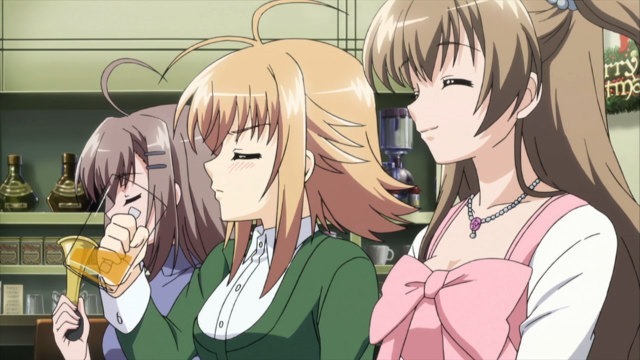
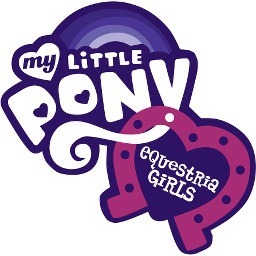 It's the “Mane Six”, only in… human form? Early leaks and promotional info was met with great suspicion and doubt within the MLP community — and still is, since many in the fandom are waiting until it premiers on The Hub in September. Equestria Girls is perhaps the black sheep (black pony? is that too racist?) of the series so far in that while it purports to exist within the same continuity (in fact, it picks up right where season three ends), it remains to be seen if the humanized stuff will be used again, incorporated into later seasons, or if this really was just a one-trick pony of a spin-off. Either way, it is the theatrical debut of
It's the “Mane Six”, only in… human form? Early leaks and promotional info was met with great suspicion and doubt within the MLP community — and still is, since many in the fandom are waiting until it premiers on The Hub in September. Equestria Girls is perhaps the black sheep (black pony? is that too racist?) of the series so far in that while it purports to exist within the same continuity (in fact, it picks up right where season three ends), it remains to be seen if the humanized stuff will be used again, incorporated into later seasons, or if this really was just a one-trick pony of a spin-off. Either way, it is the theatrical debut of 

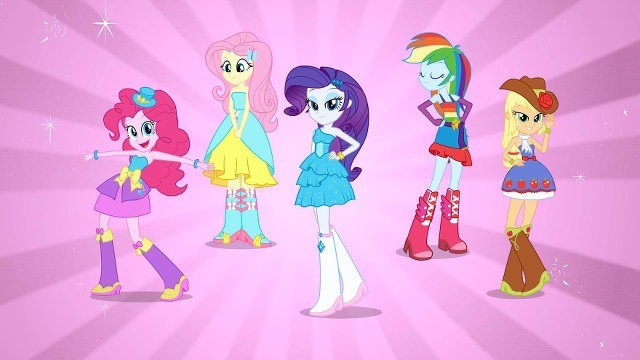
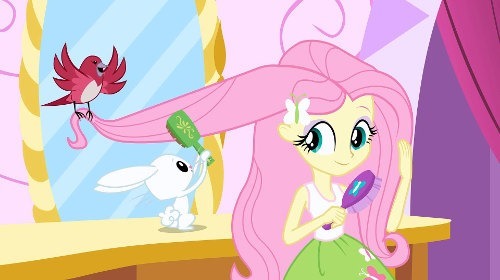
 Slice-of-life shows like this are always difficult to review. They tend to attract statements like “funny, really enjoyable, and surprisingly earnest”; but rarely anything specific because it isn’t easy to put your finger on exactly what’s clicking with a show, yet you know it nonetheless. Certainly it is the great cast, the witty dialogue, excellent delivery and timing, and the rhyme and recall of jokes and themes. And yet, it’s more than that even, because behind all of that is a show that manages to have small, but real, progression. When it would be too easy to keep things static, characters and their relationships do show changes over the course of two seasons’ worth. This is important, as, like shows in the US such as The Office, it manages to give a solid core, or “heart”, to an already delicious outer casing.
Slice-of-life shows like this are always difficult to review. They tend to attract statements like “funny, really enjoyable, and surprisingly earnest”; but rarely anything specific because it isn’t easy to put your finger on exactly what’s clicking with a show, yet you know it nonetheless. Certainly it is the great cast, the witty dialogue, excellent delivery and timing, and the rhyme and recall of jokes and themes. And yet, it’s more than that even, because behind all of that is a show that manages to have small, but real, progression. When it would be too easy to keep things static, characters and their relationships do show changes over the course of two seasons’ worth. This is important, as, like shows in the US such as The Office, it manages to give a solid core, or “heart”, to an already delicious outer casing. Our setting is that of a family restaurant, very obviously a parody of Denny’s, where it focuses on the day-to-day antics and events of the staff. While the show rarely ventures outside of this, never really glimpsing into the young part-timers’ schools and only occasionally their home life, the lack of adventure in locale is balanced with a sense of familiarity and stability. The focus, after all, isn’t the restaurant or working at all, but the characters themselves. Thus, the setting can and should be static and incidental, allowing it to recede while the characters, actions, and dialogue come to the front. Like Seinfeld, where Jerry’s apartment or Monk’s Café were never really all that important in of themselves, just frequently seen and thus familiar, allowing the show to focus on the best part: Jerry and George’s conversations about nothing.
Our setting is that of a family restaurant, very obviously a parody of Denny’s, where it focuses on the day-to-day antics and events of the staff. While the show rarely ventures outside of this, never really glimpsing into the young part-timers’ schools and only occasionally their home life, the lack of adventure in locale is balanced with a sense of familiarity and stability. The focus, after all, isn’t the restaurant or working at all, but the characters themselves. Thus, the setting can and should be static and incidental, allowing it to recede while the characters, actions, and dialogue come to the front. Like Seinfeld, where Jerry’s apartment or Monk’s Café were never really all that important in of themselves, just frequently seen and thus familiar, allowing the show to focus on the best part: Jerry and George’s conversations about nothing.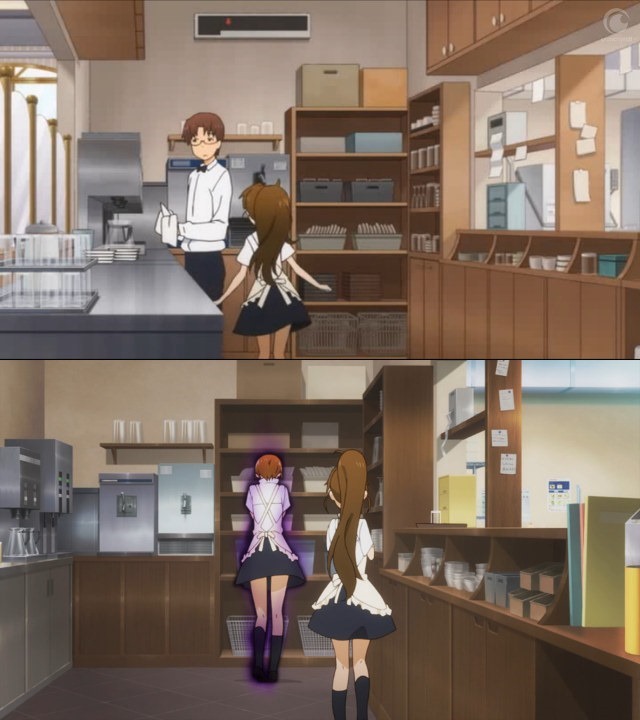
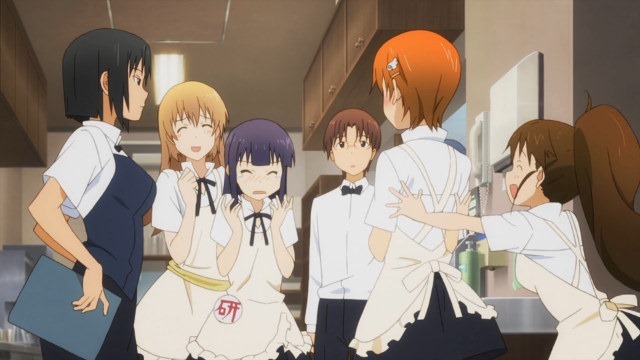
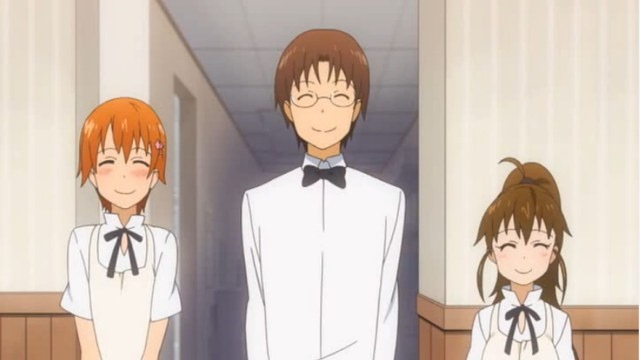
 I frequently bemoan
I frequently bemoan 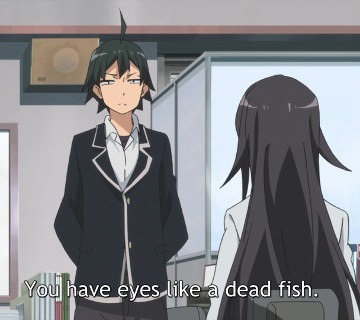 Things start off strongly, though, with our male lead, in the form of Hachiman (called Hikki by most of the rest of the cast), waxing eloquent on the deceitful and ultimately futile game youth play over various idealized scenes of his school. You see, he’s a loner sort with a huge chip on his shoulder about human relationships, bred from a long history of rejection and awkward encounters, especially with the opposite sex. (“Can we just stay friends?” as one early flashback recalls.) As such, he has developed into a loner-by-choice who has given up on trying, with a very negative view of the whole ordeal to the point of cynicism. While
Things start off strongly, though, with our male lead, in the form of Hachiman (called Hikki by most of the rest of the cast), waxing eloquent on the deceitful and ultimately futile game youth play over various idealized scenes of his school. You see, he’s a loner sort with a huge chip on his shoulder about human relationships, bred from a long history of rejection and awkward encounters, especially with the opposite sex. (“Can we just stay friends?” as one early flashback recalls.) As such, he has developed into a loner-by-choice who has given up on trying, with a very negative view of the whole ordeal to the point of cynicism. While 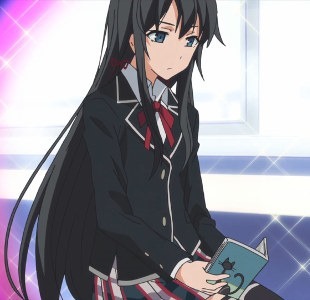 The real crux of the plot starts quickly, as his sardonic and cynical view of things bleeds pretentiously into more than just his anti-social behavior but his writing, which brings him to the forefront attention of his teacher after he turns in a rather harshly worded essay (which, as we discover, we just heard in that beginning montage). Determined to cure him, his teacher forces him to join the Volunteer Service club, which just so happens to have only one member: Yukino, a girl whose perspective is perhaps as damaged as his though in her own way and not in as obvious a manner. Very early on, they involve themselves with a third girl, Yui, and the three sort of de facto become a working club. Forced by the same teacher to engage in volunteer service within the school, she hopes that it will force them into situations and people that will open their eyes in time to the truth. Kind of a nice twist, as she never really lectures them on things and instead puts her confidence into them directly, that they will, on their own, come to the realization themselves (which, perhaps, she correctly assumes will be far more lasting and impacting of a lesson than any verbal barrage she could hurl at them). She remains the antagonist, still, by forcing them into the club directly and thus into the various situations indirectly, but a good-natured antagonist all the same. It’s refreshing to have an example of a non-evil, non-villain antagonist— after all, the antagonist opposes the protagonist but that does not have to be in a literal fighting kind of way.
The real crux of the plot starts quickly, as his sardonic and cynical view of things bleeds pretentiously into more than just his anti-social behavior but his writing, which brings him to the forefront attention of his teacher after he turns in a rather harshly worded essay (which, as we discover, we just heard in that beginning montage). Determined to cure him, his teacher forces him to join the Volunteer Service club, which just so happens to have only one member: Yukino, a girl whose perspective is perhaps as damaged as his though in her own way and not in as obvious a manner. Very early on, they involve themselves with a third girl, Yui, and the three sort of de facto become a working club. Forced by the same teacher to engage in volunteer service within the school, she hopes that it will force them into situations and people that will open their eyes in time to the truth. Kind of a nice twist, as she never really lectures them on things and instead puts her confidence into them directly, that they will, on their own, come to the realization themselves (which, perhaps, she correctly assumes will be far more lasting and impacting of a lesson than any verbal barrage she could hurl at them). She remains the antagonist, still, by forcing them into the club directly and thus into the various situations indirectly, but a good-natured antagonist all the same. It’s refreshing to have an example of a non-evil, non-villain antagonist— after all, the antagonist opposes the protagonist but that does not have to be in a literal fighting kind of way.